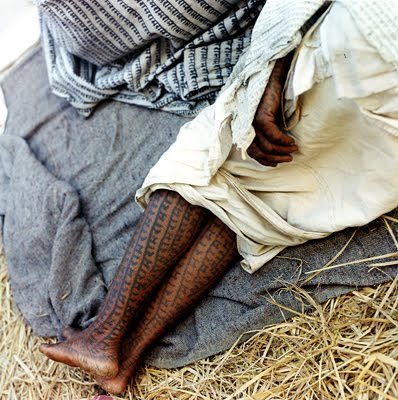by Journal/Brian Rose

Nature as Artifice, Aperture Gallery -- © Brian Rose
Not since they established the city of Nieuw Amsterdam in the 17th century have the Dutch been such a presence in the city as now. Everywhere one turns there is yet another event tied to the 400th anniversary of the arrival of Henry Hudson, an Englishman hired by the Dutch, to these shores. We have long known that many of our local names are derived from the Dutch—Brooklyn, Harlem, Tribeca—no that’s a joke, Tribeca is the Indian name for triangle below Canal.
But never have we been reminded so often and so well of our Dutch heritage. Had it not been for present day Dutch promotional savvy, we would probably have missed the whole 400th anniversary thing. Or we’d have been stuck with celebrating on our own terms, which certainly would not have involved major cultural events and exhibitions.
Were the United States to remind the English of our common heritage by unilaterally staging an official series of arts events in London, it would be regarded as an act of cultural imperialism, rightly so. But New Yorkers are pretty confident of their place in the grand scheme of things—center of the universe as we know it—so a little cultural hubris on the part of the Dutch is not necessarily unwelcome. The city has rolled out the red carpet, with the mayor pointing out, in this election year, that none of it has cost the city a red cent, much less $24 in beads and trinkets.
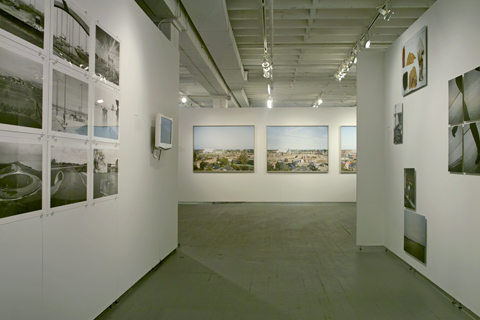
Nature as Artifice, Aperture Gallery -- © Brian Rose
Which brings me, belatedly, to the topic of this post—an exhibition at Aperture Gallery, Nature as Artifice: New Dutch Landscape in Photography and Video Art. This is the second major show this year featuring Dutch photographers. The first, at the Museum of the City of New York, focused on New York as seen by the Dutch. In this exhibit, the Dutch look at their own landscape, historically one of the most engineered patches of ground on earth.
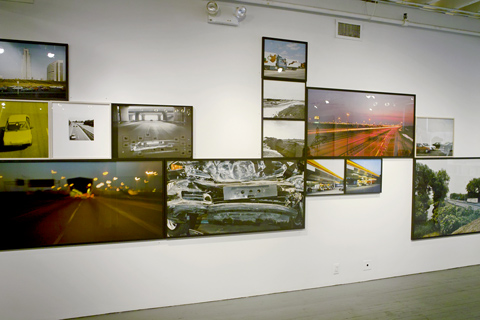
Snelweg, Theo Baart and Cary Markerink -- © Brian Rose
Having lived in the Netherlands for about 15 years, I was familiar with some of the photographers in the show. One wall of the gallery was devoted to a tour de force project called Snelweg (freeway), the work of Cary Markerink & Theo Baart. Snelweg presents the highway as both the connective tissue of suburbanization and as a place in itself. The pictures, made in various formats and sizes collaged together, looks great on the wall, but made for an even better book. Here’s a description by the photographers from the George Eastman House blog:
Since the Dutch prefer to look at “high culture” rather then reflect upon the “low culture” – the suburban landscape – it was difficult to find funding for our project. It forced us to take the lead. We subsequently became the producers, photographers, publishers and designers of the project. For the publication we had in mind we invited the American-born Dutch writer Tracy Metz who contributed an elaborate essay on the phenomena of the Dutch Highway. When designing the photo-book we choose a linear form. We had photographed in a mix of styles – using a variety of cameras and film – reflecting on the changes that had occurred in landscape-photography since the seventies. Every spread of the book was different; we used gatefolds, grids, full-bleed pages and included a typographical landscape as a double-gatefold, using the names of underpasses which in the Netherlands are called after the historical locations present before the highway was constructed there.
Although Snelweg depicts the freeway in the intensely used Dutch context, it’s really a universal theme, and applies to the motorway landscape of western Europe and the urbanized parts of the United States. It could have been the starting point for a different exhibition looking at connectivity and mobility as inhabited space not simply as the bare bones of infrastructure.
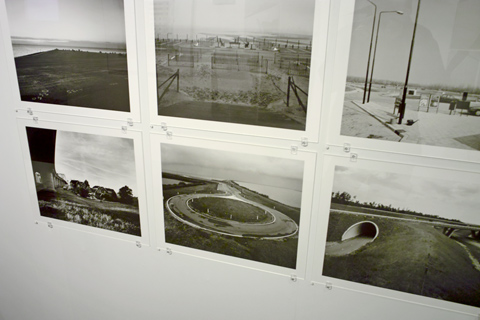
Jannes Linders photographs -- © Brian Rose
The rest of Nature as Artifice presents less complete slices of the Dutch landscape with some photographers well represented, others harder to get a handle on. Jannes Linders, one of my favorite Dutch photographers—largely unknown in the U.S.—is shown in a grid of large format black and white prints. These quiet, mostly emptied out vistas, deserve more wall space. They show a basic fact of the Dutch landscape, that while virtually every parcel of land is designated for use, much of the country retains its 17th century horizontal aspect punctuated by spires, windmills, and newer urban fixtures. What sets Linders apart is that he invests this often banal landscape with a poetic, though somber, quality that—from my experience—lies at the heart of Dutch society.
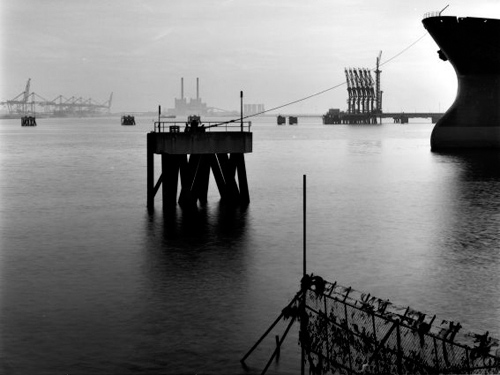
Photo by Jannes Linders
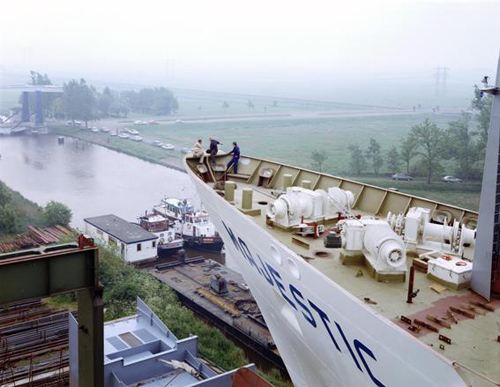
Photo by Hans Aarsman
As an outsider in the Netherlands I found the Dutch frequently inscrutable, insular. That’s how I feel about Hans Aarsman’s photographs. When I first arrived in the Netherlands his book of photos taken from the roof of an RV while traveling the country was something of a popular sensation for what was basically art photography. I never connected with the pictures, but obviously the Dutch recognized something essential about themselves in the mirror of his camera. In any case, I don’t think he is well served by showing poorly printed 4x5 contact prints to Americans unfamiliar with his photographs.
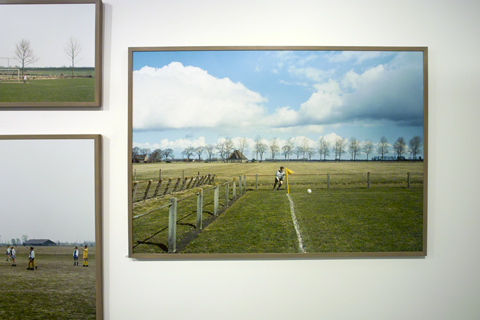
Hans van der Meer photographs -- © Brian Rose
Two other photographers I’d like to spotlight here are Wout Berger and Hans van der Meer. The latter has for years been photographing small time soccer fields in the Netherlands and all over Europe. While his pictures capture moments of play, they are equally about the surrounding landscapes, and express how integral the game is to Dutch society—and much of the world. I have always loved these pictures. Three, shown in this exhibition is not enough.
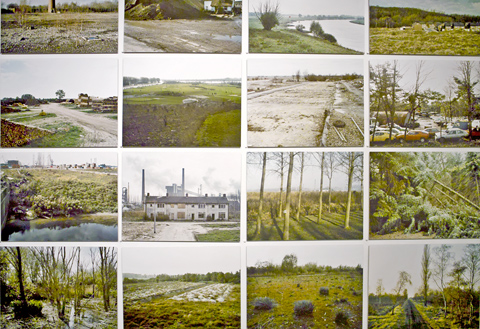
Poisoned Landscape by Wout Berger -- © Brian Rose
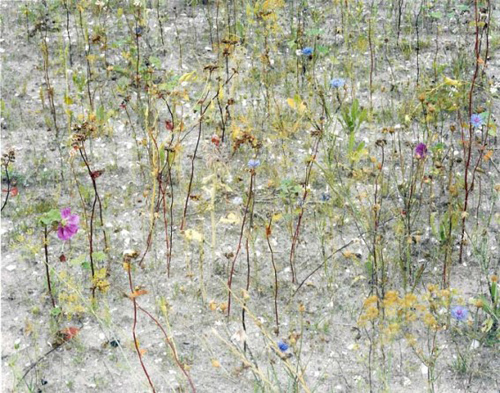
Photograph by Wout Berger
Wout Berger is another brilliant Dutch photographer perhaps not adequately shown in Nature as Artifice. His photographs of polluted wasteland around the Netherlands are interesting—despite murky looking prints—but his more recent work, often made just looking down at the ground a few feet in front of him, find the infinite in the finite. His book, Like Birds, which is on sale at Aperture Gallery, is beautiful.
What’s missing from this exhibition, speaking from a not entirely disinterested perspective (see my own pictures of the periphery of Amsterdam), are images of the new neighborhoods, the utopian architecture, the supreme expressions of the planners and architects whose visions of the future have been implemented in the Netherlands to an extent unique in the world. There are glimpses of it in Nature as Artifice, but just as the cityscape of New York was missing from Dutch Seen at the Museum of the City of New York, significant aspects of the Dutch landscape are largely absent in this, nevertheless, worthwhile show at Aperture.
Have this group photograph New York? Now that would have been interesting.



















